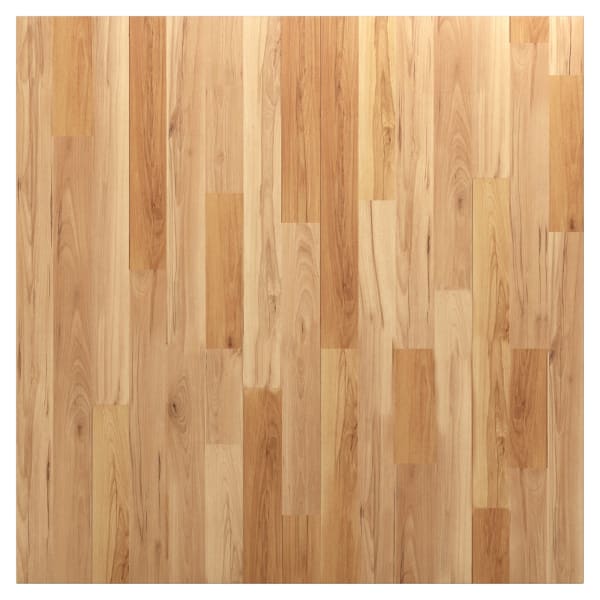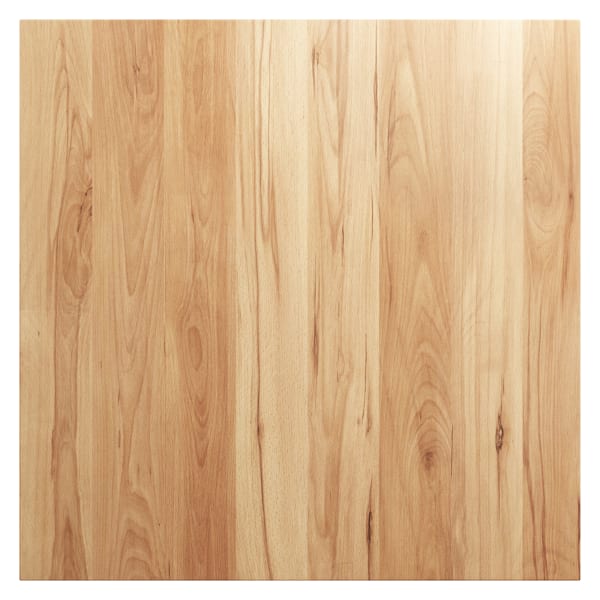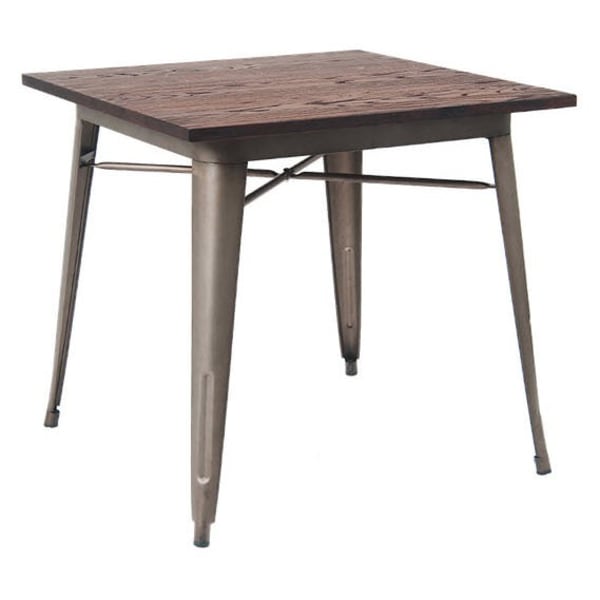Wood is by far the most common material used in the world. Almost any type of wood can be used to build and design restaurant furniture. Each wood type possesses its unique characteristics adding different degrees of color, style, dimensions and warmth thus putting emphasis and beauty to most décor themes. This guide will further elaborate on the various type of wood and its characteristics as well as materials used to build restaurant tables.
Wood Table Tops Guide

Butcher Block Vs. Plank Wood Table Tops
Selecting the right wood table tops can be a difficult task. Especially if you don’t know what exactly you are looking for. And that's even before we go into laminated and wood like materials such as resin. Understandingly, choosing the ideal wood table top can be quite intimidating. To help you with your choice we created this guide that will go over various wood types, table top build and design as well other wood like materials.

Solid Wood Butcher Block Table Top

Solid Wood Plank Table Top
Hardwood Table Top vs Softwood Top
A dining table is typically the focal point of every restaurant so naturally you would be looking for restaurant tables that are mostly made of hardwood. Hardwood comes from broad deciduous trees as opposed to softwood from conifer trees. Wood table tops made from hardwood are more resistant to years of wear and tear. Hardwoods are comparatively darker in color whereas softwoods have lighter shades. Because they are longer lasting than softwood, hardwood is comparatively more expensive.
Because hardwood is commonly used in most commercial grade furniture, the popular choices of wood species used for these restaurant tables in industrial, rustic, mid-century and traditional restaurant décor themes are beech, maple and oak. If you are looking for a lightweight and more affordable option, wood table tops made from softwood species such as pine may be what you need. Though softwoods are cheaper, they aren’t as durable and they dent easily.
| Wood Type | Wood Species | ||||||
| Hardwoods | Beech, Maple, Oak, Ash, Mahogany, Rubberwood | ||||||
| Softwoods | Pine, Spruce, Cedar | ||||||

Wood Type and Use
Equipping your venue with the right furniture entails a delicate balance of choosing materials for restaurant tables that are stylish, affordable, and durable. You may take a liking towards the glossy and timeless look of a plank wood table top though it may be too pricey for you. However, you may find a laminated table top to be more budget friendly and economical with little maintenance required.
You may wonder if the level of durability matches up with other wood table tops. The table below describes the types of wood table tops available and their characteristics:
Solid Wood, Veneer and Laminate Comparison
| Table Top | Construction Type | Maintenance | Affordability |
| Solid Wood | Solid wood construction with various types of edges | Easy to refinish, repair, sand and stain to conceal damages | Comes with a more upfront cost but won't need to be replaced as much and can be refinished time and again |
| Veneer | The core would be usually made out of manufactured wood such as plywood with a thin layer of wood veneer on top and edges | Warp resistant retaining its look long term | Moderately priced though costing more than laminate tables but less than solid wood table tops |
| Laminate | Similar core as veneer with a laminated sheet on the surface. Edge type may vary (see below) | Made to resist heat, spills and scratches, hard to conceal over-time damages and scratches | Affordable, easy to clean and low maintenance |

Wood Table Edges
There are many types of edges available for wood restaurant tables. The most popular and practical table edges are the bullnose, waterfall and eased.
- Bullnose - Rounded table edge, normally with a radius that is half of the table top thickness. For example, if the table is 1 1/2" thick, the radius would be ~3/4". The bullnose table edge has a classic look.
- Eased - The term eased edge refers to a slightly radiused profile and does not exceed 1/16”. It tends to be more polished and tempered to create a clean look.
- Waterfall - The waterfall edge is somewhat of a combination of the Bullnose and Eased edges with part of the edge being rounded followed by a straight edge.

Popular Restaurant Wood Tables
Sometimes all you want is a complete table that will save you the hassle of matching a base to your desired table top. Below are our most popular wood table sets that will save you time when ordering your new restaurant tables:














